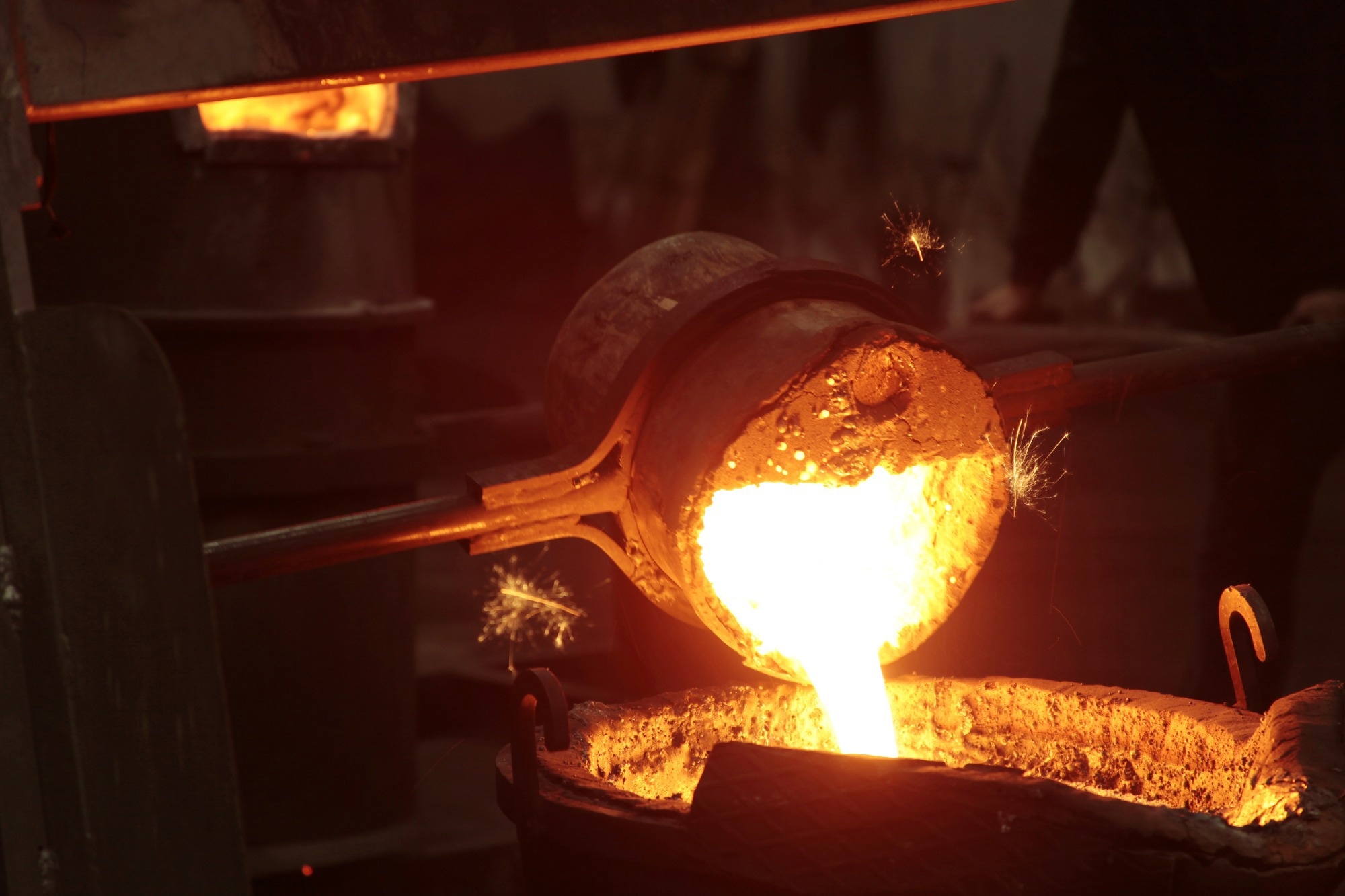By merging 3D-printed titanium scaffolds with molten aluminum, scientists have created a metal composite that mimics the strength strategy of reinforced concrete, offering a heat-resistant, high-strength material for the future.

Study: Achieving improved mechanical performance in aluminum matrix composites with rebar-reinforced concrete-inspired structures. Image Credit: safakcakir/Shutterstock.com
A recent study published in the journal Nature Communications introduced a new design for aluminum matrix composites (AMCs) inspired by the strength and structure of rebar-reinforced concrete (RC). By combining additive manufacturing and micro-casting, researchers created rebar-reinforced aluminum matrix composites (RC-AMCs) that exhibit remarkable mechanical performance. The aim was to address the limitations of conventional aluminum alloys, which lose strength at high temperatures, thus restricting their potential in critical environments.
Rethinking Aluminum’s Limits
The development of lightweight materials is becoming increasingly important across aerospace, automotive, and civil engineering sectors. Traditional aluminum alloys, while widely used, tend to experience significant strength degradation above 300 °C. Reinforcing aluminum with other materials has proven effective for enhancing strength. However, many existing composites still weaken under elevated temperatures.
Inspired by the design of reinforced concrete, which combines the compressive strength of concrete with the tensile strength of steel, researchers are applying similar principles to metal matrix composites. By integrating a high volume fraction of thermotolerant titanium trialuminide (Al3Ti) particles into aluminum matrices, they aim to reduce strength loss at elevated temperatures. This research bridges the gap between conventional alloys and advanced composites, opening up the possibility for materials that remain strong and stable under extreme conditions.
How the RC-AMCs Were Made
In the study, the team produced RC-AMCs using a combination of additive manufacturing and micro-casting. The design incorporated titanium alloy struts with an AlSi7Mg aluminum matrix reinforced by thermotolerant Al3Ti particles, resulting in a material with significantly enhanced compressive and tensile strength.
The process began with the creation of a three-dimensional (3D) computer-aided design (CAD) model of the titanium alloy scaffold. Using selective laser melting (SLM), researchers fabricated a cubic lattice structure composed of unit cells measuring 0.5?×?0.5?×?0.5 mm, with strut diameters of just 0.1 mm. During the micro-casting stage, the titanium lattice was infiltrated with molten AlSi7Mg alloy at 800?°C under vacuum conditions for two hours. This ensured strong metallurgical bonding and a clean interface between the struts and the aluminum matrix, minimizing porosity to below 0.5 vol% and reducing interfacial defects.
To assess performance, the team subjected the resulting composites to uniaxial compression tests across a temperature range from room temperature up to 500?°C. They also conducted detailed microstructural analysis using scanning electron microscopy (SEM) and transmission electron microscopy (TEM) to investigate deformation mechanisms and structural stability at various temperatures.
Key Mechanical Properties and Thermal Stability
The RC-AMCs demonstrated remarkable compressive performance, significantly exceeding the capabilities of conventional aluminum alloys and previously reported composites. At room temperature, the unreinforced aluminum matrix showed an average compressive yield strength of 103?MPa. In contrast, the RC-AMCs achieved compressive yield strengths above 537?MPa.
Performance at elevated temperatures was even more impressive. At 400?°C, the composites reached compressive yield strengths of approximately 938?MPa, one of the highest values ever recorded for aluminum-based materials, with a specific strength around 235?kN·m/kg. This exceptional thermal stability was linked to unique deformation mechanisms that activate under high-temperature conditions.
Microstructural analysis revealed that abnormal thermal twinning in the Al3Ti phase played a key role in maintaining strength at elevated temperatures. This behavior contrasts with typical aluminum alloys, where dislocation slip dominates and leads to softening as temperature increases. Uniquely, in these composites, twin activity became more pronounced at higher temperatures, an unusual phenomenon that contributed to increased flow stress and damage tolerance. Even at 500?°C, the RC-AMCs maintained compressive yield strengths around 335?MPa, depending on the direction of applied load.
Potential Applications in Engineering
The RC-AMCs’ ability to retain strength and structural integrity under extreme heat makes them highly attractive for a range of engineering applications, particularly in aerospace, automotive, and industrial sectors. Components exposed to high thermal loads, such as engine parts, exhaust systems, and structural supports, could benefit greatly from this class of material.
Equally important is the flexibility afforded by the manufacturing process. The combination of additive manufacturing and micro-casting enables the production of complex, high-performance geometries that would be difficult or impossible to fabricate using traditional methods. This structural versatility allows engineers to design parts that are optimized not only for mechanical performance but also for specific thermal, dimensional, or spatial constraints.
By uniting structure and material into a cohesive design framework, RC-AMCs offer engineers a powerful tool to fine-tune performance for demanding real-world environments.
Conclusion and Future Directions
Rebar-reinforced aluminum matrix composites represent a significant advancement in the development of high-performance, heat-tolerant materials. By applying the design philosophy of reinforced concrete to metal systems, this research demonstrates that integrating lightweight alloys with structurally optimized reinforcement can achieve a rare combination of exceptional strength and thermal stability.
Looking ahead, future research will focus on refining the scaffold architecture, optimizing the distribution of reinforcements, and further improving the strength and reliability of the interfacial bonding between phases. Assessing the material’s long-term durability under cyclic and tensile loading will also be essential to support real-world applications in aerospace and structural engineering.
The researchers describe this approach as “building a house within a material” - a metaphor that captures the internal structural integrity embedded within these composites. With its balance of lightness, strength, and heat resistance, the RC-AMC design sets the stage for the next generation of materials engineered for extreme environments.
Journal Reference
Shao, C., Chen, H. & Zou, Y. (2025). Achieving improved mechanical performance in aluminum matrix composites with rebar-reinforced concrete-inspired structures. Nat Commun 16, 9487. DOI: 10.1038/s41467-025-65234-9, https://www.nature.com/articles/s41467-025-65234-9
Disclaimer: The views expressed here are those of the author expressed in their private capacity and do not necessarily represent the views of AZoM.com Limited T/A AZoNetwork the owner and operator of this website. This disclaimer forms part of the Terms and conditions of use of this website.